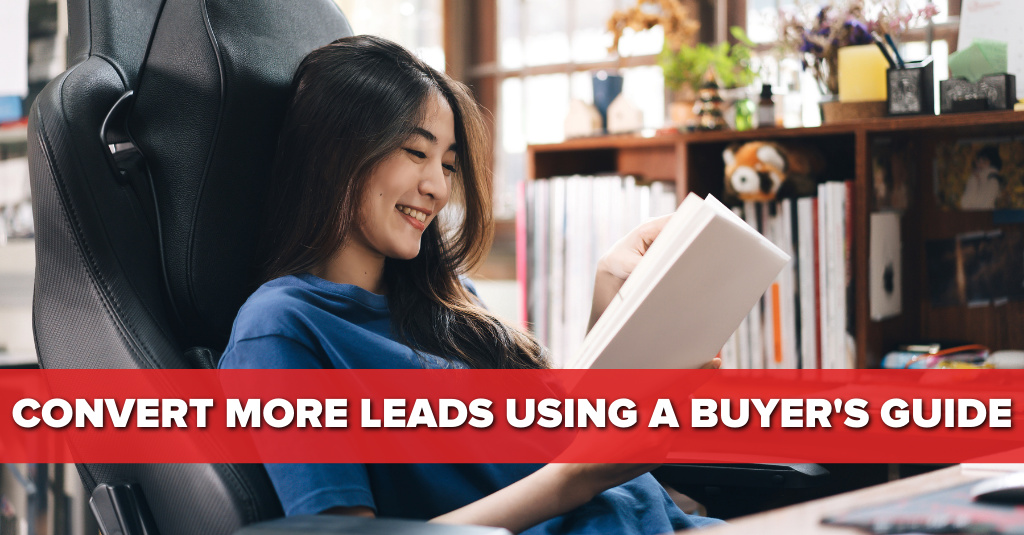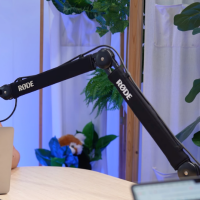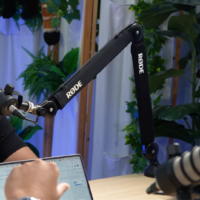In today’s digital age, we as consumers have become more cautious than ever about sharing our personal information online. And that’s why, now more than ever, businesses need to create content that is so high value, it’s worth trading our details for. This is where a Buyer’s Guide comes in. A Buyer’s Guide is a great way to make connections with your leads, and get them to digitally introduce themselves to you.
Think about the last time you came across an online form or quiz that asked for your contact details. Did you quickly fill it out? Or did you hesitate and wonder whether it was worth getting spammed with countless emails and unsolicited calls?
Well, the last time I was THIS close to submitting my email address was for a Marvel superhero quiz. I mean, who wouldn’t want to know whether they’re more like Iron Man or Captain America? Alas, they gated the answer behind a form that needed all my personal details – sigh. I still haven’t found out which superhero I am.
In today’s digital age, we as consumers have become more cautious than ever about sharing our personal information online. And that’s why, now more than ever, businesses need to create content that is so high value, it’s worth trading our details for.
This is where a Buyer’s Guide comes in.
A Buyer’s Guide is a great way to make connections with your leads, and get them to digitally introduce themselves to you.
So, in this article, we’ll be covering:
What is a Buyer’s Guide?
A buyer’s guide is a comprehensive resource designed to help individuals make informed purchasing decisions. The main goal of a buyer’s guide is to provide potential customers with all the information they need to make an informed decision about a product or service.
“Blog articles are perfect for answering very specific questions our buyers have in great detail. But ultimately, we want to make connections with our buyers, and to do this we need to get them to digitally introduce themselves to us. To do this, we need to offer them something desirable in return.”
– Linda, Digital Marketing Consultant @RedPandas

A by-product of developing a Buyer’s Guide is that it helps companies shorten the sales cycle. A buyer’s guide helps consumers connect solutions to their problems, which means by the time your sales reps contact them, they are more educated and further down the sales cycle I.e., more qualified.
For example, if 10 potential buyers read your guide, and eight of them realise that your product or service isn’t the best fit for them, you end up only investing time in two of them, both of which are interested and are more likely a right fit for your product or service.
A buyer’s guide can be tailored to cover everything from the beginning to end stages of the customer journey, from the reader being problem aware to actively looking to buy. Let’s do a quick recap of the customer journey to see how a buyer’s guide works with it. Although there are many buyer journey models we could use (for example the AIDA model), we will be focusing on the Five Stage Model of Customer Awareness.
The Five Stage Buyer Model includes the following stages:
- Problem unaware: buyer isn’t aware they have a problem in the first place
. - Problem aware: buyer is aware they have a problem and are searching for signs and symptoms
. - Exploring all categories: buyer is aware of the problem and understands signs and symptoms, so they are now searching for potential solutions
- Exploring one specific category: buyer is aware of all the potential solutions available and has decided on one particular solution and is now exploring that solution further to make sure they’ve made the right decision
- Exploring our solution: buyers know exactly what they want and are trying to figure out which brand they want to buy it from.
Here’s an example of the five-stage buyer model with potential topic ideas for each stage of the journey:
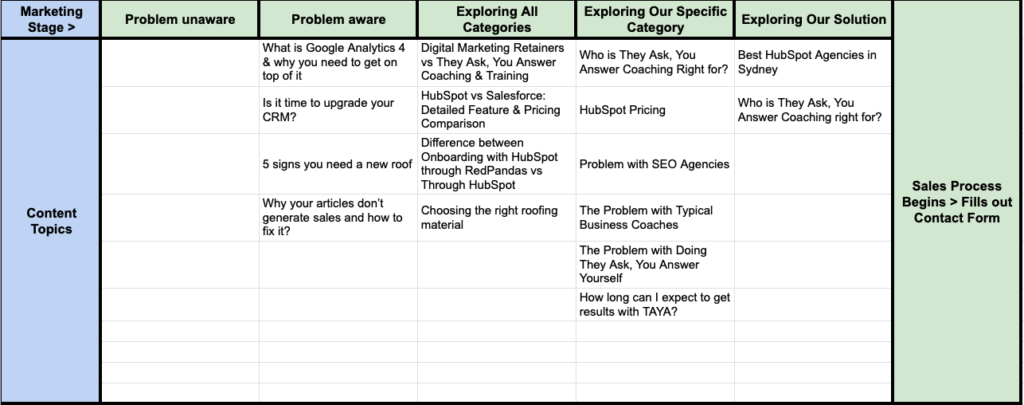
If you want to know more about this model, you can check out our detailed 5-Stage Customer Awareness model article here.
How to Create Your Buyer’s Guide
Getting started with creating a buyer’s guide can seem overwhelming, but with the right approach, it can be a straightforward process. Here’s how to get started:
- Start with an outline: A good place to begin is by referencing any buyer’s journey framework you use to ensure that you’re covering all the essential elements. This way, you’ll know how each section fits into the puzzle.
- Write your content: If you have existing content that you can refine, that’s great. If not, start writing from scratch. Think of it as another blog article, connecting one chapter to another.
- Design your guide: Once you have your content ready, you can focus on the design. There are many online templates available, such as those from HubSpot, Canva, or even PowerPoint, that you can use to create a visually appealing guide.
- Consider the design elements: When it comes to design, focus on creating a guide that is easy to digest and compatible with different devices. Make sure it passes the “blink test,” meaning it should look good at a quick glance. Don’t get too hung up on the design, as long as you’re addressing the buyer’s worries, fears, and concerns, you’re on the right track.
- Hit publish: There’s only one thing left to do, it’s time to hit that publish button.
Remember, the most important thing is to provide value to your customers and make the buying process easier for them. As long as your guide meets those goals, you’re doing a great job!
The structure of a buyer’s guide
So now you know how to create a buyer’s guide, but how should you structure your outline? Simply put, your chapters should start with very top-of-funnel content, and move towards bottom-of-funnel content. Make sure to address the main question that a buyer would ask at each stage of the buyer’s journey.
In general, you want to follow this structure for your buyer’s guide:
- Problem Aware: write about signs and symptoms to help customers decide whether or not they’re in need of your product or service.
- Exploring all categories: write about comparisons for different category options to help the buyer learn more about all the product and service options available to them.
- Exploring one specific category: write about The Big 5 Topics. These refer to the The best 5 content topics we recommend businesses develop in order to generate traffic, leads, and sales. These topics include Cost and Pricing, Problems, Comparisons and versus, Best of lists, and Reviews. You can find out more about how to develop these types of content here.
- Exploring our solution: write about the process and timelines involved in purchasing the product or service. This should include information about your business’ approach to delivering your products or services and the process customers typically can expect to experience when they make a purchase. In this section, include a call to action on the next logical step one should take after reading the guide. For example, ‘Book a 15-minute call with one of our experts’.
Here’s an example of an outline of a Buyer’s Guide. Try to see if you can figure out which sections match up with which stages of the customer awareness model:
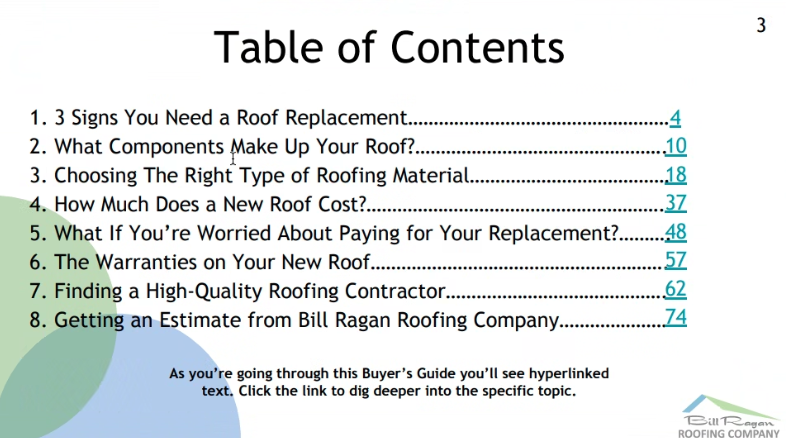
Do note that in order to make your buyer’s guide, you don’t necessarily have to use the five-stage model of customer awareness as the guide. You could use any buyer journey model, such as AIDA (Attention, Interest, Desire, Action) for example. The point is that whatever framework you use, you should be delivering the content in a structured way that helps buyers move through the buyer’s journey seamlessly.
Some key tips to keep in mind when building your buyer’s guide
- The flow and structure need to be right. Focus more on this than anything else, because if you don’t get this right, the buyer’s guide just won’t work.
- Include clickable links that direct the reader back to the website. Blog articles are designed to provide more information about specific topics, so make sure they can read more about topics they’re interested in. This also keeps your guide digestible while ensuring your buyer has everything they need.
- Make sure your guide passes ‘The Blink Test’. This test asks: what’s the one thing the person needs to take from that page if they skim? Figure out what that piece of information is for every page, and make it so obvious and noticeable that even if they skim, they’ll remember it.
- At the end of your buyer’s guide, add a CTA. What’s the next step for the buyer after they read all this information? If you make this section too complicated they won’t take that next step.
- Use anchor links in the buyer’s guide to make it easy for users to move through the guide – especially in your Table of Contents.
- Write clear, concise, and compelling copy with the Storybrand Framework to. To learn more about how to use Storybrand for your business, check out our detailed article here.
Where Should I Put My Buyer’s Guide?
A buyer’s guide can be placed on your website in several key locations to increase visibility and engagement. One option is to put it above the fold as a transitional or soft call to action (CTA).
A transitional or soft call to action is a secondary call to action on your website. For example, your main CTA might be “Get a Quote” but your secondary CTA may be “Download Our Buyer’s Guide”. By placing it above the fold, it means that it will be easily accessible for visitors to your website and encourages them to take a closer look at your guide if they’re not ready to click on your primary CTA.
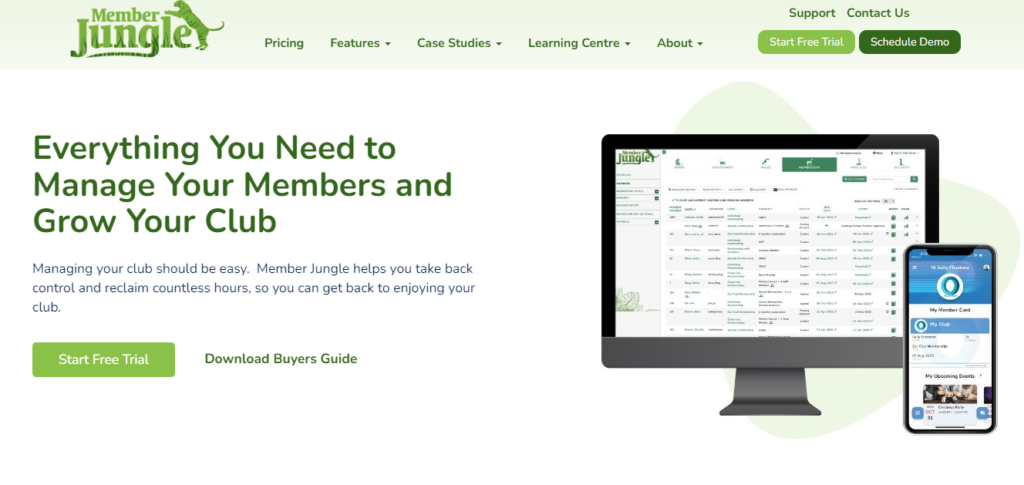
To further increase engagement, you can also sprinkle the CTA on relevant web pages, particularly in blog articles.
On top of this, you can use your buyer’s guide as part of your sales strategy, such as in nurturing emails sent to prospects.
Is it the Right Time for me to Develop a Buyer’s Guide?
Before you start creating a buyer’s guide, it’s important to make sure your website has all the necessary components in place. Here’s a checklist to help you determine if it’s the right time for you to create a buyer’s guide:
- Proper Home Page and Navigation
- Honest Education: The Big 5 and General Content on Your Website
- A Good Combination of Written and Video Content
- Site Speed
- Social Proof
If you’ve checked off the first five items on this list, I would recommend you then look at premium education (such as e-Books and Buyer’s Guides), and self-selection tools. It’s also worth noting that different guides solve different issues. For example, there are also Info Guides, Seller’s Guides, and Customer Guides.
So, what’s next?
Creating a buyer’s guide can be a valuable addition to your website if you have the right elements in place. A well-crafted buyer’s guide can help potential buyers make informed decisions, reduce the sales cycle and ultimately drive conversions.
If you’re interested in reducing the sales cycle and driving conversions, you might be interested in learning more about the ‘They Ask, You Answer’ (TAYA) framework. Here’s a few articles that can get you started:
